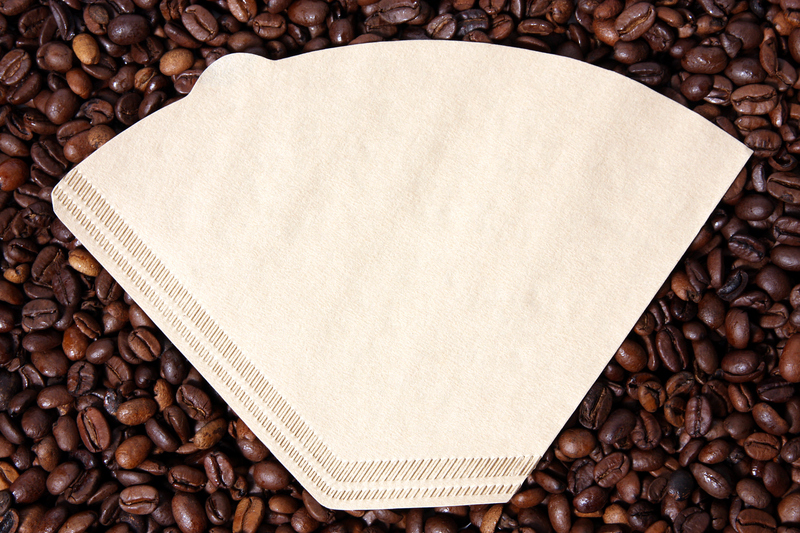Simple steps to tackle and clean window sill mould
Posted on 10/06/2025
Simple Steps to Tackle and Clean Window Sill Mould
Discovering mould on your window sills can be alarming, especially since it not only affects the appearance of your home but also poses health risks. Fortunately, removing mould from a window sill doesn't have to be complicated. With the right techniques and preventive habits, you can ensure your windowsills remain healthy and mould-free. In this comprehensive guide, you'll learn everything you need to know to clean mould off window sills and stop it from returning.

Why Does Window Sill Mould Occur?
Mould, often seen as dark spots or fuzzy patches, thrives in moist environments. Window sills are particularly vulnerable because they are places where humidity, condensation, and lack of ventilation often combine. The most common causes of window sill mould include:
- Poor air circulation around windows
- Condensation due to temperature differences inside and outside
- Leaky windows or unsealed frames allowing water intrusion
- Inadequate cleaning and maintenance
If left unchecked, window sill black mould can spread and damage your property and even trigger allergies or respiratory problems. That's why quickly addressing mould on your window sills is essential.
How to Identify Mould on Window Sills
Before you proceed with cleaning, it's crucial to identify mould correctly. Mould on window sills usually appears as:
- Black, green, or brown spots along the caulking or wood
- Musty, unpleasant odours near the affected area
- A visible fuzzy or slimy texture
- Spreading patterns along cracks or edges of the sill
Is Window Sill Mould Dangerous?
Many homeowners wonder, is window sill mould harmful? While minor patches of mould can occur in most homes, ignoring mould can be hazardous. Exposure to spores may cause:
- Allergic reactions such as sneezing, runny nose, or skin rashes
- Asthma attacks or worsening of respiratory conditions
- Eye and throat irritation
- Long-term health issues if significant growth is ignored
Preparation: What You'll Need to Clean Mould Off Window Sills
Before starting, gather the right tools and protective gear. Here's a complete checklist to ensure safe and effective cleaning:
- Protective gloves and a mask (to avoid inhaling spores)
- Goggles for eye protection
- Disposable towels or microfiber cloths
- A soft brush or old toothbrush
- White vinegar or hydrogen peroxide (for natural cleaning)
- Commercial mould remover (for persistent mould)
- A spray bottle
- Bucket of warm water
- Dish soap (optional)
- Plastic bag for disposing of contaminated materials
*Note: Always make sure the room is well-ventilated while cleaning window sill mould. Open windows and doors where possible.
Step-by-Step Guide: How to Remove Mould from Window Sills
Step 1: Protect Yourself
Before tackling the mould, put on gloves, a mask, and goggles. Safety first! Mould spores can cause throat, eye, or skin irritation, so don't skip this step.
Step 2: Dry the Area
If the window sill is wet, wipe away any excess moisture with a clean cloth. Dampness encourages mould growth, so make sure the surface is as dry as possible before cleaning.
Step 3: Remove Surface Mould
Begin by gently scrubbing the visible mould spots with a dry brush or old toothbrush. This helps loosen the mould. Use a paper towel to carefully wipe up the residue. Dispose of used towels and brushes in the plastic bag immediately to prevent spreading spores.
Step 4: Apply Cleaning Solution
There are two popular choices to clean mould on window sills:
- White Vinegar Solution: Fill a spray bottle with undiluted white vinegar and spray generously onto the affected area. Let it sit for at least 1 hour.
- Hydrogen Peroxide: For more stubborn mould, use hydrogen peroxide (3% solution). Spray and leave it for 10-15 minutes.
Step 5: Scrub and Wipe
After the solution has soaked in, scrub the window sill using your brush or cleaning cloth. Focus on corners, crevices, and caulking where mould often lingers.
Wipe everything thoroughly with a rinsed, clean cloth. For persistent stains, repeat the process or use a stronger solution as necessary.
Step 6: Dry and Inspect
Once cleaned, dry the window sill completely to prevent new mould growth. Check for any remaining signs of mould. If you see recurring black spots, repeat the cleaning or consult a professional, especially if the mould is spreading inside the wall or window frame.
Step 7: Dispose of Contaminated Materials
Seal used towels, wipes, and brushes in a plastic bag and throw them away. Don't reuse them for household chores to avoid spreading spores.
Step 8: Restore Ventilation
After you clean mould off your window sills, open windows and use fans to restore airflow and speed up drying. Good air circulation is one of the best preventions for window sill mould.
Natural Alternatives for Cleaning Window Sill Mould
For those seeking a chemical-free approach to removing mould from window sills, several household products are effective, including:
- Baking Soda Paste: Mix a tablespoon of baking soda with a little water to form a paste. Apply, scrub after 10 minutes, then wipe clean.
- Lemon Juice: The acidity helps break down mould. Spray freshly squeezed lemon juice, leave for 15-20 minutes, scrub, and wipe.
- Tea Tree Oil: Add one teaspoon to a cup of water in a spray bottle. Spray, leave for an hour, and wipe away.
How to Prevent Window Sill Mould from Returning
Once you have removed window sill mould, it's vital to put preventive measures in place. Here are the best tips to stop mould coming back:
- Improve Ventilation: Regularly open windows and use extractor fans in kitchens and bathrooms.
- Use a Dehumidifier: Keep humidity levels below 60% to make your home less hospitable to mould.
- Wipe Condensation Daily: Especially during colder months, clean water drops from your windows and sills every morning.
- Seal Leaks: Repair damaged window seals and caulking to prevent water intrusion.
- Clean Regularly: Dust and wipe window frames and sills weekly with vinegar or baking soda to discourage mould growth.
- Check for Wall Damp: Sometimes, window sill mould is due to rising damp in underlying walls. Address any structural causes with professional help.
Maintenance is key--these habits can keep your window sills free from mould for the long term.
When to Call a Professional
If your window sill mould:
- Covers an area larger than one metre squared
- Keeps reappearing shortly after cleaning
- Is accompanied by structural window damage or severe water leaks
- Causes severe health reactions in your household

Frequently Asked Questions about Window Sill Mould
Can I paint over mould on my window sill?
No. Painting over window sill mould will not solve the underlying issue. The mould will continue to grow beneath the paint, possibly damaging the sill still further. Always remove all traces of mould before any painting or redecorating.
Can bleach be used to clean window sill mould?
While bleach may kill surface mould, it does not penetrate porous materials like wood or drywall deeply enough to stop regrowth. For window sills made of wood or painted finishes, use vinegar, hydrogen peroxide, or a specialist mould cleaner instead. Bleach may also discolor painted surfaces.
Is window sill mould only a problem in winter?
Mould tends to flourish in cold, damp conditions, but it can occur year-round wherever there is excess humidity and moisture. Always be vigilant for condensation and water leaks, regardless of the season.
What if mould is behind the window sill?
If you notice persistent musty odours or the mould keeps returning, there may be growth hidden behind the sill or inside the wall. In this case, it's best to consult a professional for a thorough inspection and safe removal.
How often should I check and clean my window sills?
Regular maintenance is the best prevention strategy. Inspect your window sills for moisture or discolouration every 1-2 weeks, especially during cold or wet periods. Clean any signs of mould promptly to stop it from spreading.
Conclusion: Keep Your Window Sills Clean and Healthy
Dealing with window sill mould may feel overwhelming, but with these simple, effective steps, you can restore your home's cleanliness and protect its air quality. Tackle mould early, clean it thoroughly, and use preventive habits for long-lasting results. If you're ever unsure about the severity or cause of mould in your home, don't hesitate to seek expert guidance.
By following this guide and keeping up with regular maintenance, you can enjoy fresh, mould-free window sills and a healthier living space year-round.
Take action today--your family, your windows, and your home will thank you!




